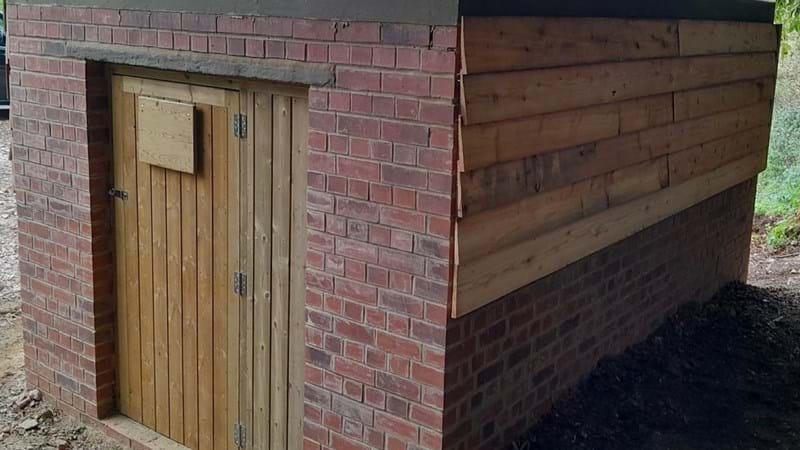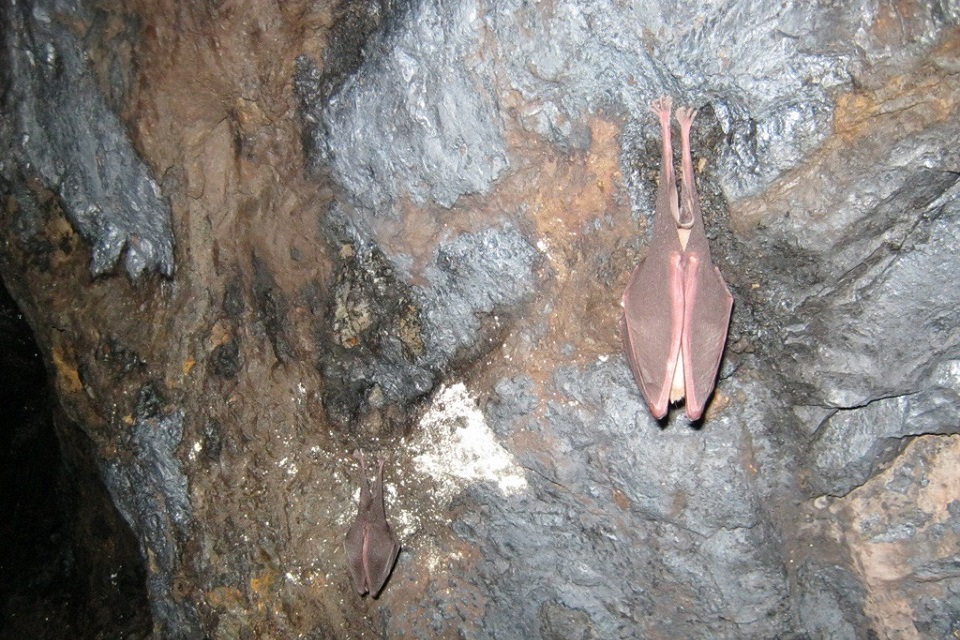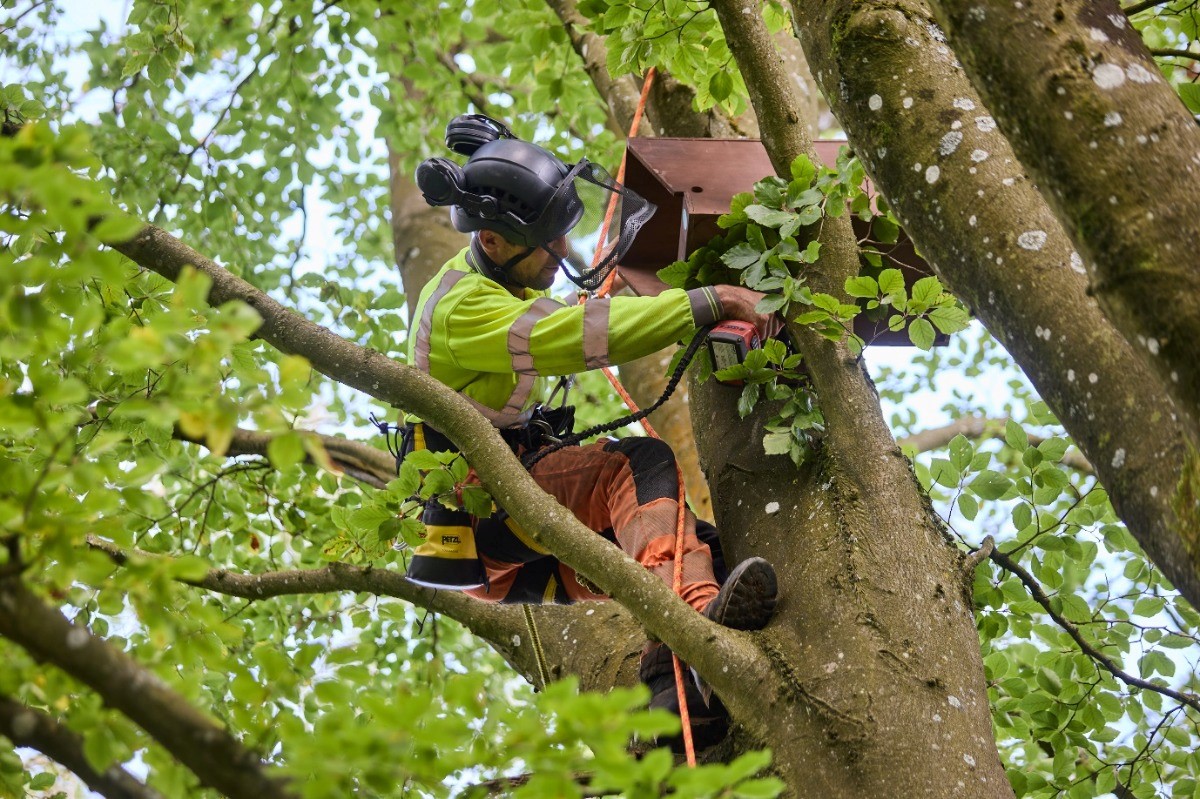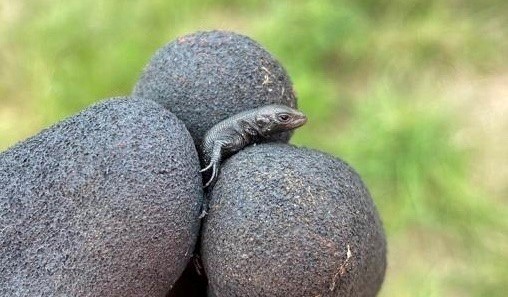To the bat cave! Our support for UK bat species along the A417 Missing Link
Published
20 Sep 2023
Converting a World War II bunker for wildlife is one of the innovative measures we are taking to help support UK species of bats that have made their home in Gloucestershire.

Share this article
The converted structure will be home to the lesser horseshoe, brown long eared and other species of bats.
We are also installing bat boxes in suitable habitat across the scheme, which although not obvious to passing motorists, provide vital homes for the bats.
Veteranisation techniques – where the decaying process is started in young trees - will also be used on trees to create potential roost opportunities that mimic crevices and roosting opportunities only found on older more mature trees.
Three other bat structures will also be developed during the scheme, along with the planting of trees, hedges, woodland and grasslands to improve sustainability.
The converted structure and other measures will help bats living alongside the A417 Missing Long, such as the lesser horseshoe (left) and greater horseshoe (right), pictured in a cave
Bats are fascinating animals – the only true flying mammal – and there are 18 species of bats in the UK, with the creatures accounting for more than a quarter of mammal species in the UK and around 20% of all mammal species worldwide.
Weighing not much more than 2lbs on average, this small mammal is often found in caves, rock crevices, or under bridges. However, National Highways is going the extra mile to help preserve the species that made their home along the A417 Missing Link.
Bat species being supported include the lesser Horseshoe and barbastelle, an incredibly rare bat that lives in deciduous woodland. They’re 4-5cm long and have a wingspan of around 26cm. In the UK, they are protected under the Wildlife and Countryside Act, 1981, and are listed as near threatened on the global International Union for Conservation of Nature (IUCN) Red List of Threatened Species.
Other species along the A417 Missing Link include noctules, barbastelle, soprano and common pipistrelles, brown long eared, serotine and natterers.
To ensure the bat population in the area were properly supported and evaluated, we sought the services of chartered ecologists and have a team of Ecologists on site at all times to ensure the works are all implemented correctly.

We're also installing bat boxes in suitable habitat across the scheme, which although not obvious to passing motorists, provide vital homes for bats
Along with identifying the various bats, they also implemented a biodiversity mitigation plan that would see the scheme have a positive contribution towards local bat and bird populations, including suitable habitat adjacent to the scheme.
Work on the scheme goes beyond bats though, with ecologists continuing to relocate reptiles away from construction areas including baby common lizards, slow worms, Roman snails and adders.

A common lizard relocated as part of the biodiversity work on the scheme
As construction progresses, green bridges will be lifted into place to ensure animals can cross the new road safely.
Supporting the landscape vision of the scheme, we will also continue to work with stakeholders to maximise environmental benefits, and the company’s plans include creating new habitats and habitat connections for native wildlife species, such as birds, bats, bees, and badgers.
As part of the major road upgrade, other biodiversity boosts will include:
- 5 miles drystone walls
- 5.6 miles hedgerow
- 25 hectares native woodland
- 4.3 hectares scrub
- 7.6 hectares native grassland
- 75 hectares limestone grassland
On an average day, this section of the A417 carries approximately 40,000 vehicles. Congestion can be frequent and unpredictable, and with motorists diverting onto local roads to avoid tailbacks, this causes difficulties for neighbouring communities.
The £460 million scheme, as well as preserving and enhancing the surrounding Cotswolds Area of Outstanding Natural Beauty, will help to eradicate the notorious bottleneck, unlock Gloucestershire’s potential for growth, support regional plans for more homes and jobs, and improve life for local communities.
Our A417 Missing Link scheme includes:
- 3.4 miles of new dual carriageway connecting the existing A417 Brockworth bypass with the existing A417 dual carriageway south of Cowley
- the section to the west of the existing Air Balloon roundabout would follow the existing A417 corridor. However, the section to the south and east of the Air Balloon roundabout would be offline, away from the existing road corridor
- a new junction at Shab Hill, providing a link from the A417 to the A436 towards Oxford and into Birdlip
- a new junction near Cowley, replacing the existing Cowley roundabout
- the existing A417 between the Air Balloon roundabout and the Cowley roundabout would be repurposed, converting some lengths of this existing road into a route for walkers, cyclists and horse riders, while retaining other sections to maintain local access for residents
To find out more about the A417 Missing Link and for the latest scheme updates, visit the scheme website.
